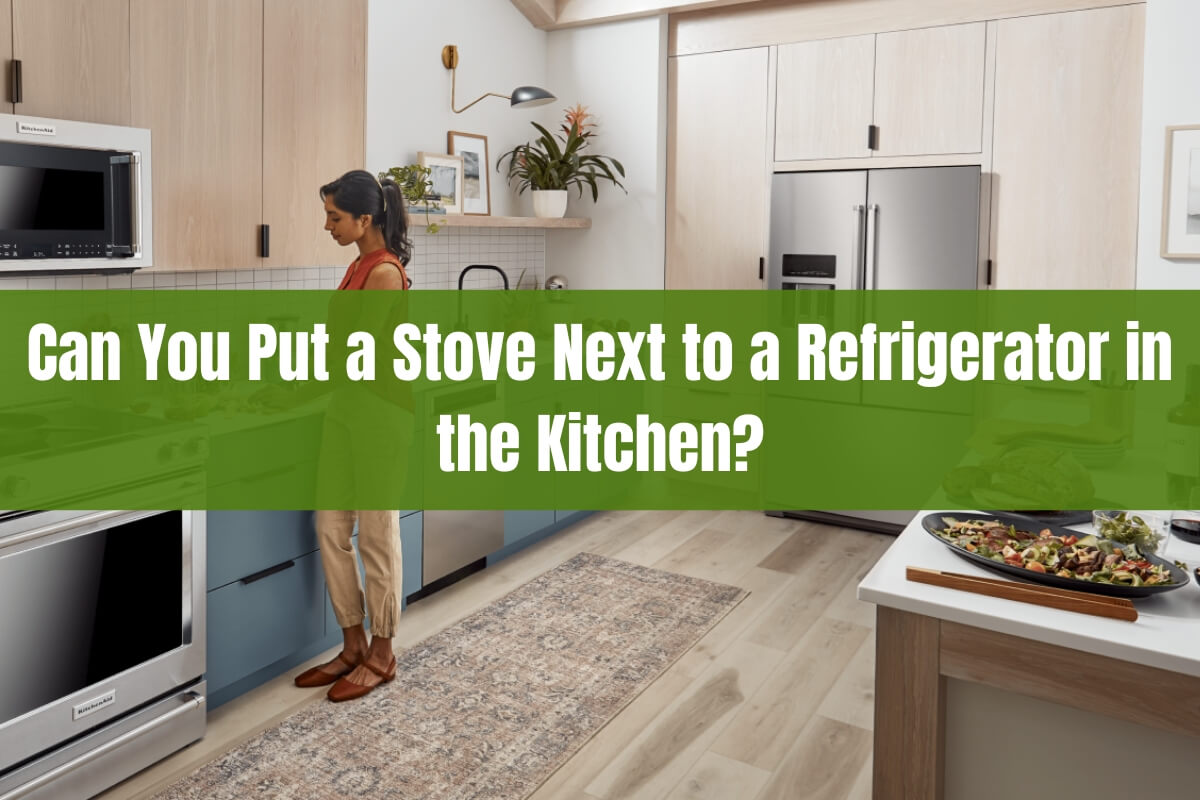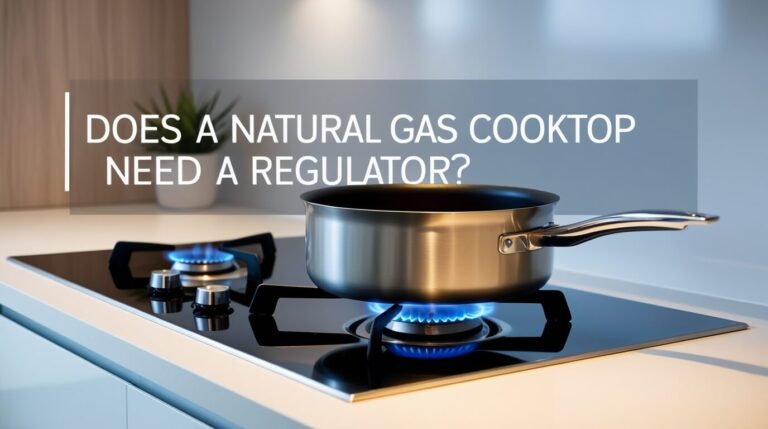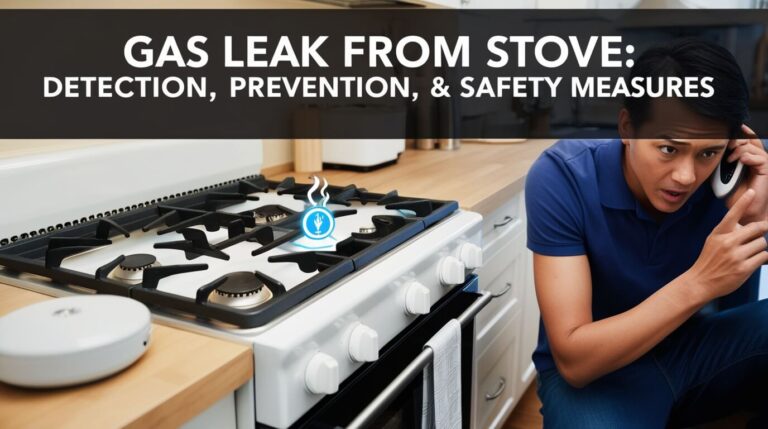
When it comes to designing or remodeling a kitchen, the placement of major appliances like the stove and refrigerator is a crucial consideration. These heavy-duty workhorses need to be positioned not just for optimal functionality, but also with safety and energy efficiency in mind.
The question of whether you can place a stove right next to the refrigerator is a common one that arises during kitchen planning. The short answer is: it depends. While certain configurations may work, there are potential drawbacks to positioning these appliances side-by-side that must be carefully evaluated.
In this comprehensive guide, we’ll explore the pros and cons of putting a stove next to a fridge. We’ll cover factors like appliance types, kitchen layout, building codes, and design solutions. By the end, you’ll have all the information needed to make an informed decision on the ideal appliance arrangement for your kitchen.
The Potential Drawbacks of Placing a Stove Beside a Fridge
While a stove next to refrigerator setup may seem space-efficient, it’s important to understand the potential issues that could arise:
Heat Transfer Problems
One of the main concerns with this configuration is heat transfer from the stove to the refrigerator. When these appliances are positioned side-by-side, the heat generated by the stove (especially during oven use) can cause the refrigerator to work harder to maintain its cool internal temperature.
This increased strain on the refrigerator’s compressor and cooling system can lead to higher energy consumption and utility bills. It may also contribute to premature wear and tear, shortening the lifespan of the appliance.
Food Safety Risks
In addition to energy inefficiency, having a heat source in close proximity to your refrigerator poses potential food safety hazards. The warmer ambient temperature around the fridge could accelerate spoilage of perishable items stored inside.
While modern refrigerators are designed with insulation to mitigate external heat sources to some degree, extended exposure to stove heat may compromise food preservation capabilities.
Fire Hazards
Another key safety consideration is the risk of fire or electrical issues when major heat-generating and electrical appliances are placed immediately adjacent. Any malfunctions or shorts in either the stove or refrigerator could potentially spread more rapidly across the units, increasing hazards.
Proper spacing, ventilation, and adherence to building codes help reduce the likelihood of such events, but an appliance arrangement that separates heat sources is generally advisable.
While these drawbacks don’t necessarily preclude placing a stove beside a fridge in all scenarios, they underscore the importance of carefully evaluating the specific models, kitchen layout, venting options, and local regulations involved. With some strategic planning, it may be possible to safely accommodate this setup in certain situations.
Factors to Consider Before Putting a Stove Next to a Refrigerator
If you’re considering positioning your stove and refrigerator side-by-side, there are several key factors that will determine the feasibility and best practices:
Appliance Types
Not all stoves and refrigerators are created equal when it comes to heat output and insulation capabilities. Understanding the appliance types is crucial:
Stove Types
- Gas vs Electric: Generally, gas stoves generate more ambient heat than electric models.
- Freestanding vs Slide-In: Freestanding stoves tend to have more exposed sides that could radiate heat toward a neighboring fridge.
Refrigerator Types
- Side-by-side, French door, and top/bottom freezer configurations have varying insulation levels that affect heat resistance.
- Built-in refrigerators designed to integrate with cabinetry may have enhanced insulation.
By understanding your specific appliance models’ heat output and insulation performance, you can better gauge heat transfer risks.
Kitchen Layout and Size
The overall size and layout of your kitchen will play a major role in determining if a side-by-side stove and fridge configuration is viable:
Workflow Triangles
Many kitchen designers follow the principle of the “workflow triangle” – keeping the three main work areas (stove, sink, fridge) at an optimal distance for efficient movement. A stove beside fridge may or may not align with this workflow.
Space Constraints
In smaller kitchens with limited square footage, you may have little choice but to position the stove and fridge in close proximity. However, this increases heat transfer risks and makes door clearances a greater concern.
Door Swing Clearance
Don’t forget to account for adequate clearance when the stove and refrigerator doors are open. You’ll want enough space to open them fully without obstruction.
Building Codes and Manufacturer Guidelines
Before settling on any appliance arrangement, it’s critical to consult your local building codes and the installation manuals from your specific appliance manufacturers:
Code Requirements
Many jurisdictions have minimum distance requirements between certain appliance types that must be adhered to for safety reasons. These may specify set clearances.
Manufacturer Instructions
Appliance installation guides will provide specifics on venting needs, clearances from combustible surfaces, and any other requirements for safe, code-compliant installation.
By cross-checking building regulations and manufacturer guidelines, you can ensure your planned layout meets all safety provisions – a crucial step for any major appliance installation.
With these key considerations regarding appliance models, kitchen dimensions, and code compliance evaluated, you’ll be better positioned to determine if a side-by-side stove and fridge setup could work in your specific situation. Where potential conflicts arise, design and installation solutions may help make this configuration possible.
Tips for Safely Positioning a Stove Beside a Refrigerator
If you’ve thoroughly assessed the factors we covered and concluded that placing your stove adjacent to the refrigerator is viable, there are some tips and best practices that can help maximize safety:
Optimum Spacing Distances
While building codes will specify the legal minimum clearances required, many experts recommend exceeding these minimums where possible:
- For a gas stove next to a refrigerator, a 12-inch gap is generally advised.
- For an electric stove beside a fridge, around 9 inches of separation is typical.
- These buffer zones help prevent excessive heat transfer.
Installation Extras for Added Insulation
To further mitigate potential issues with heat exposure, you may want to invest in specialized installation extras:
- Heat Shields: Aftermarket aluminum or stainless steel panels can be mounted to deflect stove heat away from the refrigerator.
- Trim Pieces/Shelving: Built-in trim pieces or shallow shelving units can create an air gap between appliances.
- Range Hoods: A properly-sized range hood installed above the stove will help evacuate ambient heat.
Strategic Workspace Additions
If your kitchen layout allows it, adding an extra segment of countertop workspace between the stove and refrigerator can serve two benefits:
- It increases the distance between heat sources and the fridge’s cooling components.
- It provides additional prep space – making your workspace more efficient.
Base cabinets or drawers below this countertop segment canstore dishes, utensils, and cookware for convenience.
Ventilation Enhancements
In addition to range hoods, other ventilation improvements like integrated cabinet exhaust fans can promote better air circulation. This helps prevent stove heat from being trapped in the cabinet area beside the fridge.
With thoughtful spacing, added insulation features, bonus workspace, and enhanced ventilation – you can dramatically improve the safety and performance of a side-by-side stove and fridge installation. Professional design assistance is recommended to ensure an ideal implementation.
Design Ideas for an Aesthetically Pleasing Stove/Fridge Combination
Beyond just functional and safety considerations, you’ll also want your kitchen’s appliance layout to meet your aesthetic and style preferences. A stove next to fridge setup can actually be quite visually appealing when executed thoughtfully:
Built-In, Integrated Looks
Many modern kitchens aim for a streamlined, built-in look where appliances “disappear” into surrounding cabinetry. By cladding the stove and refrigerator with matching cabinet panel facades, you can create a cohesive, camouflaged appearance.
Creative Cabinetry Layouts
Rather than placing the stove and fridge directly side-by-side, you could separate them slightly using an angled or corner cabinet section. This adds visual interest while maintaining workflow proximity.
Mixed Material Contrasts
Embrace the mixed material look by choosing appliance finishes that provide an intentional contrast against your cabinets and countertops. For example, a stainless steel stove beside a cabinet-depth refrigerator clad in wood paneling.
Space-Savvy Shelving and Wings
In smaller kitchens, get creative with vertical storage by adding shelving or wing cabinets above or beside integrated appliances. This helps maximize every inch of space.
With some thoughtful design elements, you can craft a stove and refrigerator combination that’s as visually appealing as it is functional and safe. Professional kitchen designers can guide you on the latest trends and smart solutions for an integrated, streamlined look.
Alternative Appliance Arrangements to Consider
Of course, not every kitchen layout will allow for or may not be ideally suited to having the stove positioned right next to the refrigerator. In such cases, there are other potential configurations to explore:
L-Shaped or Galley Layouts
Rather than having the stove and fridge side-by-side, an L-shaped or galley-style kitchen design allows you to place them on adjacent walls or runs of cabinets. This creates efficient sightlines and workflow while separating the heat sources.
Island or Peninsula Stoves
For open-concept kitchen spaces, installing the stove or rangetop in the island or peninsula can afford ample distance from perimeter appliances like the refrigerator while anchoring the cooking zone.
Compact Appliance Alternatives
If you’re really struggling with limited square footage, exploring compact 24″ appliance options like apartment-sized stoves and under-counter refrigerators can free up space for more efficient, safe layouts.
The ideal stove and refrigerator placement will depend heavily on your kitchen’s specific dimensions, design aesthetic, and your cooking needs. But having alternative arrangements in mind can provide flexibility.
Pros and Cons Recap
To summarize the key considerations around positioning a stove beside a refrigerator:
Potential Advantages
- Space-efficient layout
- Convenient proximity for frequent stove-to-fridge trips
- Design aesthetics (integrated, built-in looks)
Potential Disadvantages
- Heat transfer causing fridge inefficiency
- Accelerated food spoilage
- Fire and electrical hazard risks
- Blocked appliance door swings
- Spatial constraints in smaller kitchens
Whether the pros outweigh the potential cons will depend on your specific appliance models, kitchen size, installation techniques, and personal preferences.
FAQ Section:
Q: Is it safe to put a gas stove right next to the refrigerator?
While not necessarily unsafe if properly installed, a gas stove does produce more ambient heat that could negatively impact a neighboring fridge’s performance. Maintaining greater separation is advisable with gas ranges.
Q: How much space should be between a stove and fridge at minimum?
Most experts recommend at least 9 inches between an electric stove and refrigerator, and 12 inches for a gas range. Consult manufacturer guidelines and local codes.
Q: Can you put kitchen appliances flush against each other?
It’s generally inadvisable to install appliances flush or directly touching, as they require clearance space for heat dispersion, door swings, and serviceability.
Q: What is the best stove/fridge placement for a small kitchen?
In compact kitchens, galley layouts, corner installations, or compact appliance options may allow you to separate heat sources while maximizing footprints.
Q: Do you need a specific clearance behind a stove for a fridge?
Yes, you’ll need to account for adequate depth behind a stove installation to allow for safe clearances from the fridge and any combustible surfaces.
Conclusion
As this guide demonstrates, the question of whether you can place a stove beside your refrigerator doesn’t have a one-size-fits-all answer. Factors like your specific appliance models, kitchen dimensions, local regulations, and overall design goals must be carefully evaluated.
While there are potential drawbacks to this side-by-side configuration in terms of heat transfer, energy use, and safety – certain installation techniques, added insulation features, and ample spacing can help mitigate these issues. In some scenarios, alternative appliance arrangements altogether may be preferable.
Ultimately, by understanding the key considerations we’ve covered, you can make an informed decision on the ideal layout for your new kitchen that balances functional workflow, code compliance, and personal style preferences. Don’t hesitate to consult kitchen design professionals to ensure you create a beautiful, safe, and long-lasting cook space through proper appliance placement.






